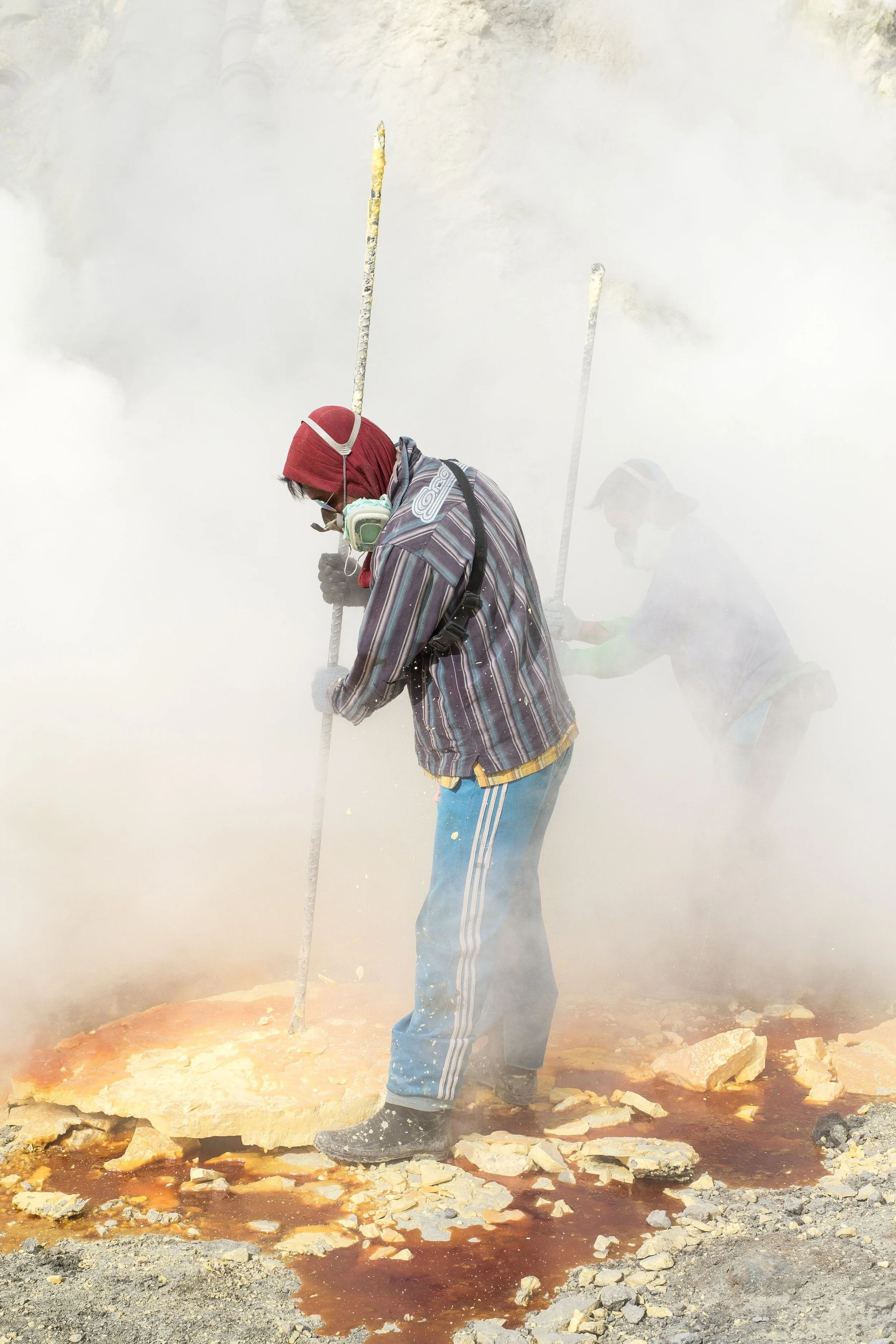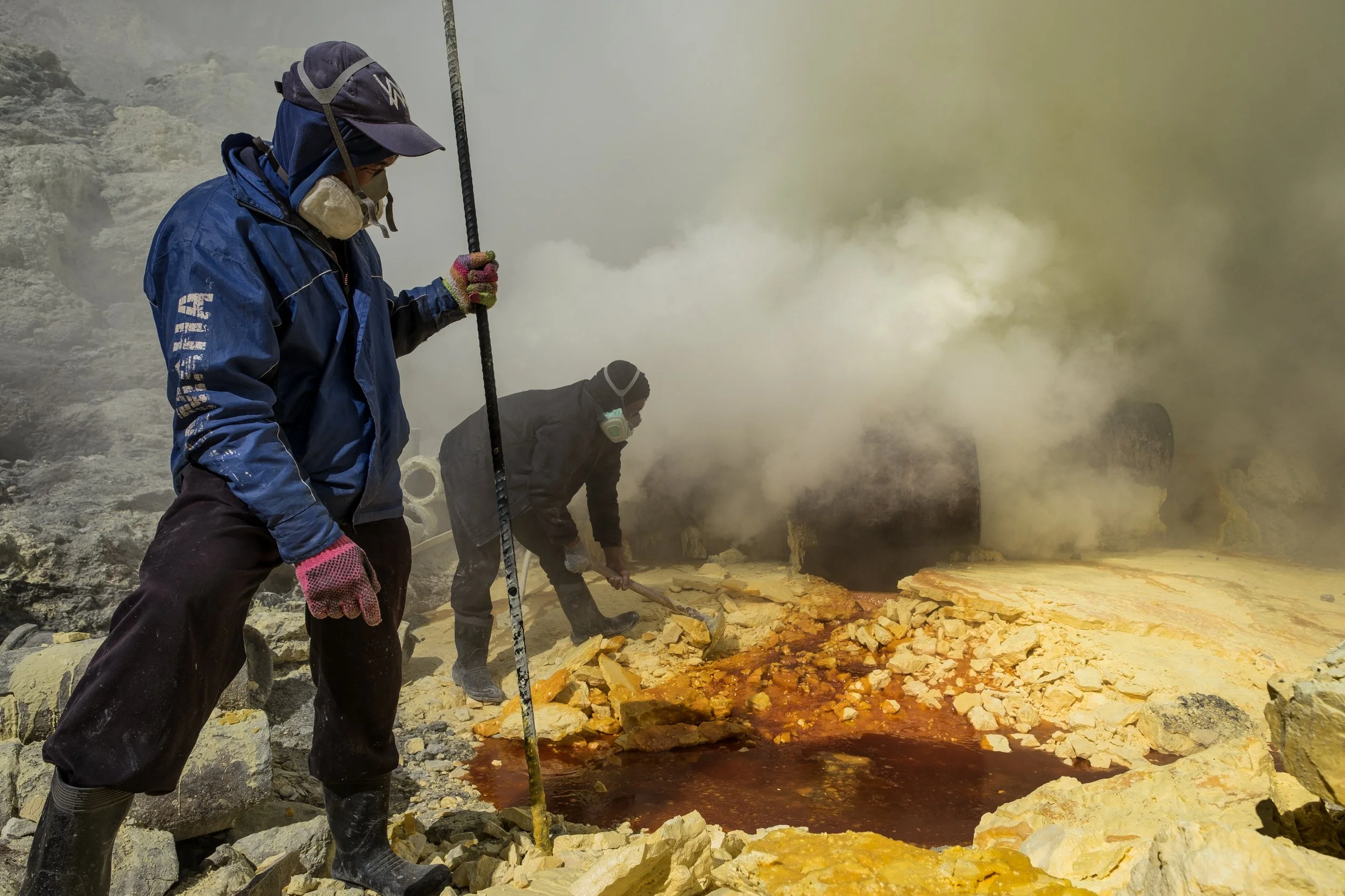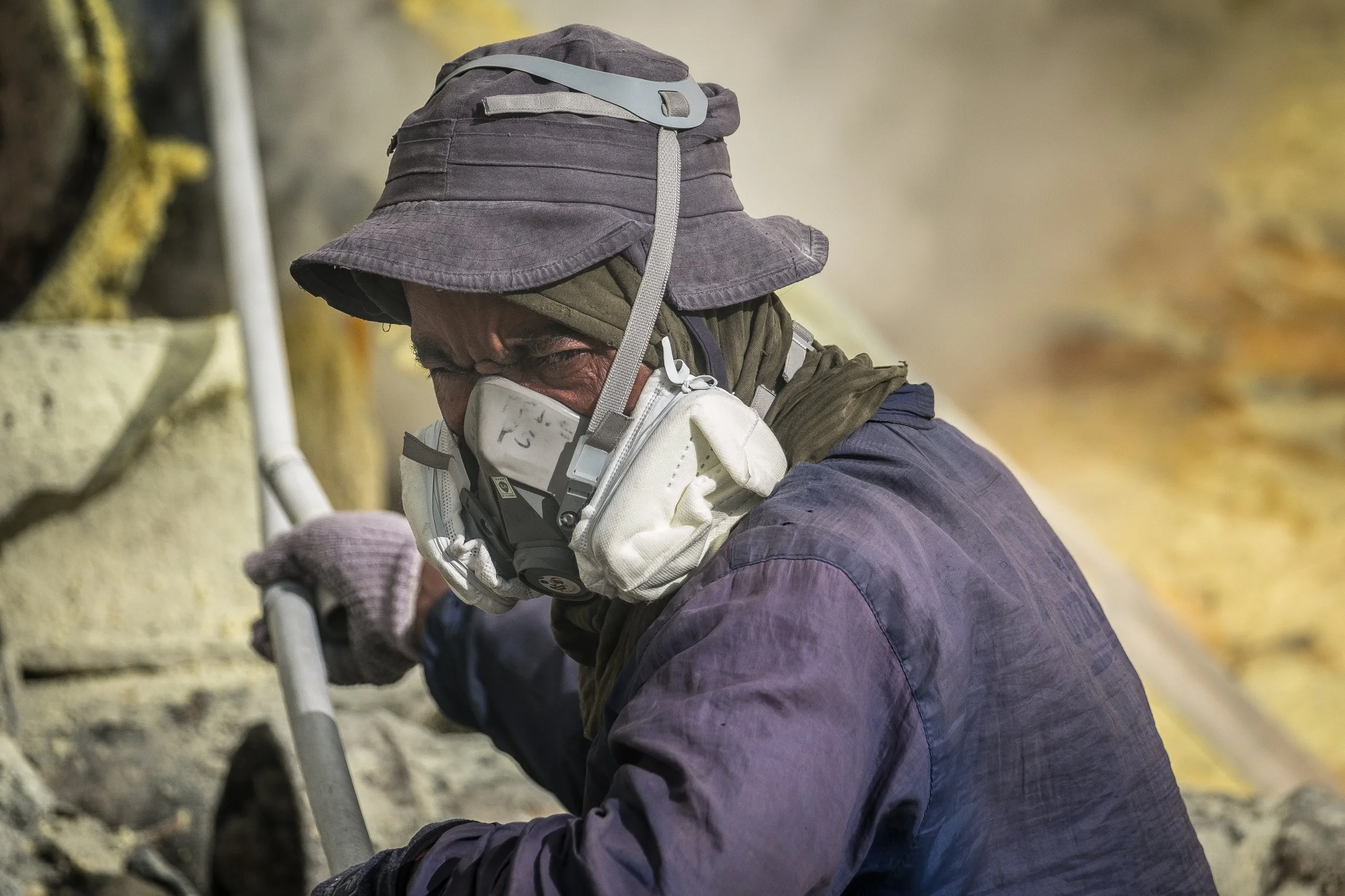




LES FORÇATS DU SOUFRE, INDONÉSIE . 2018
La mine du Kawah Ijen est connue pour ses conditions de travail dantesque et sa stupéfiante beauté. Un lac d’acide bleu turquoise jouxte le site d’extraction. Les pentes abruptes et ciselés du cratère s’érigent comme des remparts autour de cet endroit d’exception. Tout serait idyllique si un gaz toxique ne faisait pas partie de l’équation. Les nuages de soufre dans lesquels les mineurs évoluent sont extrêmement dangereux pour la santé. Sur leurs épaules, ils remontent pas à pas 80 kilos de soufre logés dans deux paniers en osier et revendent le fruit de leur labeur 6 centimes le kilo. Ce soufre sert à la fabrication de produits cosmétiques, d'allumettes, d'engrais et d'insecticides ou encore au raffinage du sucre.
Malgré son environnement hostile, la splendeur instagrammable du volcan en a fait un chouchou des blogueurs ces dernières années. Quoi de mieux qu'un petit selfie avec un masque à gaz pour faire le buzz et obtenir un maximum de « likes » ? Pour prendre conscience de son succès, il suffit de regarder les chiffres. En 2018, 175 000 personnes ont fait l'ascension du cratère contre 25 000 en 2013.
Les mineurs ont parfaitement compris l’intérêt de ce nouveau filon. Equipés de trolleys, qui leur servent habituellement à transporter le soufre, ils proposent de convoyer les touristes paresseux jusqu’au sommet en l’échange d’une coquette somme. Sur la crête, des loueurs de masques à gaz refourguent leurs camelotes contre quelques euros à des touristes peu avertis. D’autres font des extras en vendant des souvenirs. Une tortue en soufre de quelques grammes rapporte jusqu’à 50 000 roupies soit l’équivalent de 50 kilos portés au sommet du cratère.
Le juteux business ne s’arrête pas là. Régulièrement assaillit par des hordes de touristes bardés d’appareils photo, les mineurs ont appris à monnayer leur image. Ils acceptent volontiers de poser avec un touriste mais, ils n’oublient pas de leur rappeler la règle: « Photo photo. Money money ». Le contraste entre ces forçats du soufre et ces accrocs à Instagram et autres réseaux sociaux est saisissant.




















